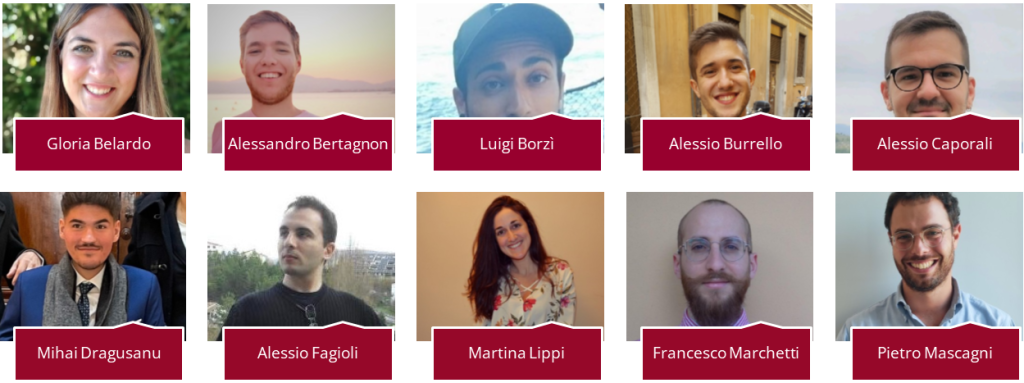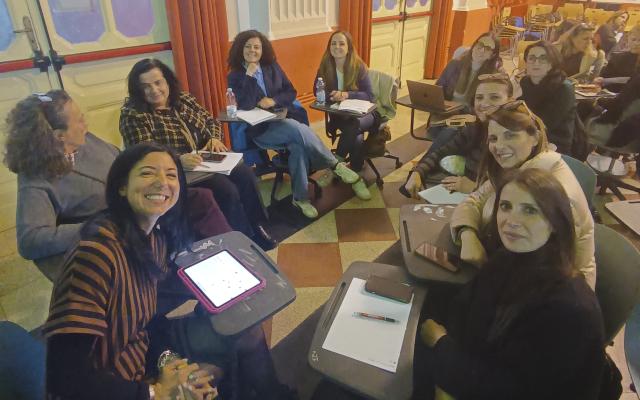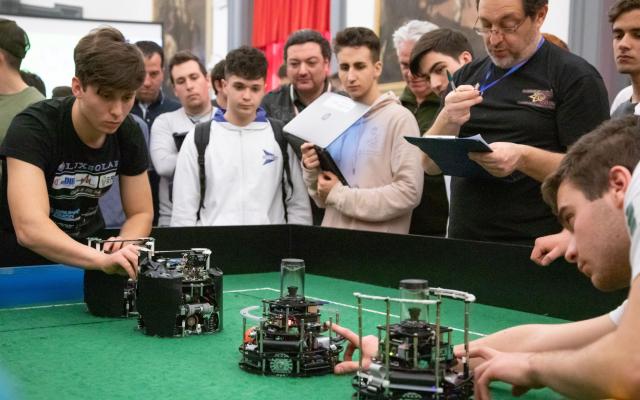The award will be presented this evening at the “Wonders of Artificial Intelligence” event.
The second edition of the Most Promising Researcher in Robotics and Artificial Intelligence received 252 applications. The award for young researchers is promoted with the Rome Campus Bio-Medico University, in collaboration with Italian Tech and Gruppo GEDI. The objective of the Research Award is to recognise the passion, dedication, perseverance, vision, creativity, and talent of young men and women working in Italian universities and research centres.
The submitted projects address work (60%), health (28%), and the environment (12%), while 3’% of applicants are women. There is an equal number of PhD and post-doc candidates, but only 15% of applications come from southern Italy.
Here is a quick summary of the ten finalists:
Gloria Beraldo, 30 | Cognition Science and Technology Institute, CNR
Services based on artificial intelligence can improve commercial social robots, personalising their interactions with different types of users (including fragile ones) in a wide range of contexts, thanks to robots’ ability to understand the user’s needs and carry out semi-autonomous assistance activities, in line with the high-level final objective decided by an expert such as a doctor. This allows us to promote the active ageing of the elderly who live at home or in assisted living facilities, simplify interactions with the external environment for individuals with motor disabilities who communicate via brain-machine interfaces, and help paediatric patients to overcome hospitalisation. AI-guided social robots are supplementary tools to conventional healthcare.
Alessandro Bertagnon, 30 | University of Ferrara
The objective of Project Aurora is to develop a robotic system that can independently carry out vascular ultrasound screening. The first prototype employs a collaborative anthropomorphic robot that operates the ultrasound probe on the patient. The robot is controlled via a two-part AI algorithm. The first is composed of an artificial neural network that identifies the anatomical areas of diagnostic interest, while the second exploits this information to optimise the robot’s movements and conduct the diagnosis.
Luigi Borzì, 31 | Turin Polytechnic
The project provides constant, non-intrusive monitoring of movement disorders throughout the day. The device, which is worn on the waist, collects ecological data in unsupervised conditions. The movement data is analysed to fully describe physical activity, evaluate postural instability, the risk of falling over, and analyse treatment. If applied at an early stage it allows the extraction of digital mobility bio-markers for the early/differential diagnosis of movement disorder. Applied once a diagnosis is confirmed it provides a complete evaluation of motor conditions, response to treatment and rehabilitation strategy, and assists in digital phenotyping. The project employs a multicentric approach and multidisciplinary skills.
Alessio Burrello, 29 | Turin Polytechnic
Miniaturised unmanned aerial vehicles (UAVs) are becoming increasingly more popular thanks to their reduced dimensions that allow them to address new tasks, such as navigating indoor environments and monitoring individuals. Nonetheless, their dimension and electronic simplicity pose serious problems in the implementation of advanced on-board intelligence. This project proposes a new pipeline for the automatic optimisation of their visual capabilities by employing deep neural networks (DNNs).
Alessio Caporali, 29 (PhD student) | University of Bologna
Robotic systems that interact with deformable objects such as clothes, cables, wires, ropes, and other objects, which are currently widespread in domestic, industrial, and medical environments, continue to pose many limitations. The project aims to improve the perception and manipulation capacity of robotic systems through solutions based on artificial intelligence. In fact, AI-based methodologies are fundamental to address intrinsic issues associated with deformable objects that are typically characterised by complex appearance, high-dimensional state spaces, and non-linear dynamics.
Mihai Dragusanu, 30 | University of Siena
Assistive and rehabilitative technology is fundamental to improve the lives of patients with disabilities. However, upper limbs devices such as exoskeletons and exoskeletal gloves are often bulky and difficult to operate for final users. Designing light exoskeletons that can be easily controlled and adapted remains an open challenge. One solution is the modular exoskeleton for upper limbs that exploits the strength generated by twisted-string actuators (TSAs) to activate upper limbs. Using TSAs with a modular exoskeleton provides advantages in terms of comfort, weight-power ratio, cost, and high precision of movements, as well as reducing fatigue from prolonged use.
Alessio Fagioli, 36 | Unitelma Sapienza
The project develops new deep learning (DL) architectures through neuroscientific knowledge and computer science to improve models addressing heterogeneous computer vision issues, such as the analysis of medical imagery or object recognition, through advanced understanding of the human visual system, memory processes, and brain plasticity. The project is based on a study of the visual system that ranges from the cellular level (i.e., neurons, glial cells) to the high-level functions that allow the modification of the brain’s internal structure (synapses) and store memories, exploiting cellular functions and organisation to define new solutions as DL architecture.
Martina Lippi, 31 | University of Roma Tre
In the context of H2020 Canopies, the project develops robotic solutions for the development of collaborative human-multi-robot collaboration for permanent precision agriculture cultivation. The development of intelligent teams of agricultural robots improves repetition, precision, and efficiency in large-scale agricultural processes. Nonetheless, developing autonomous agricultural robots is also extremely complex due to the high variable and dynamic environmental conditions in which they operate. The proposed paradigm creates a synergy that enriches robotic capabilities with greater human cognitive abilities, making the overall system more flexible, adaptive, and capable of operating in complex and unforeseen conditions in which only robots would fail.
Francesco Marchetti, 31 anni (PhD student) | University of Florence
Autonomous driving is one of the most stimulating research challenges as it allows us to reduce accidents and fatalities, saving thousands of lives. In order to navigate roads, self-driving cars employ sensors and vision systems to perceive the environment. It is fundamental not only to understand where the critical moving agents (such as pedestrians) are located, but also to foresee how they will behave and continue moving. This is not a banal issue as the future position of the moving agent is not deterministic. For any given trajectory, there can be many more than one, equally possible, future outcomes (i.e., crossroads).
Pietro Mascagni, 33 | Agostino Gemelli IRCCS General Hospital, Rome
Surgical data science (SDS) and flexible robotics are destined to improve surgery. The collaboration between surgeons and computer scientists in Rome and Strasbourg on the development of SDS solutions for safe laparoscopic cholecystectomy has led to various reference publications in surgery and medical imaging, as well as the organisation of scientific and training events by important scientific companies. Recently, the candidate has opened a laboratory dedicated to the video-based assessment and computer-assisted operations at the Gemelli General Hospital in Rome, where he is specialising in surgery. The main objective is to provide value to surgical patients through research and clinical activity.





